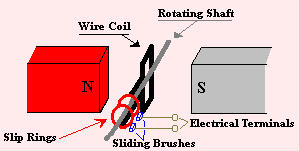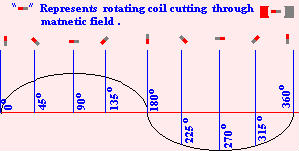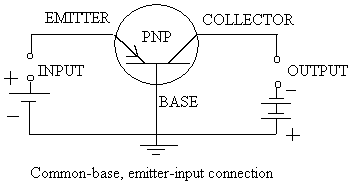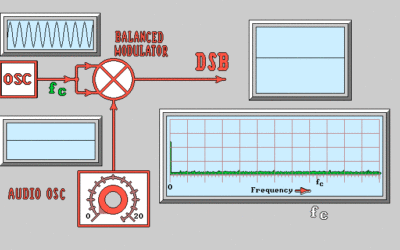 There are various ways to produce electricity. We can produce electricity chemically with a battery or electricity can be produced mechanically by a generator.
There are various ways to produce electricity. We can produce electricity chemically with a battery or electricity can be produced mechanically by a generator.
It is important understand difference between electricity produced by a battery, and electricity produced by a generator. In the case of a battery, electricity flows in one direction, from positive to negative.
It is possible to generate electricity by spinning a coil within a magnetic field. The coil is in constant motion within the magnetic field, and thus is transformed into electricity via the magnets. The electricity exits by way of the brushes and slip rings, but it is not exactly like the electricity which is produced by a battery.
If we look at the current leaving the battery, it is constantly moving in the same direction. We call this DIRECT CURRENT.
 But if we attach a generator instead of a battery in the same circuit, we notice a major change. The meter would swing back and forth from negative to positive.
But if we attach a generator instead of a battery in the same circuit, we notice a major change. The meter would swing back and forth from negative to positive.
This seems strange until we examine what is going on inside the generator. If we were to plot this swing from positive to negative on a graph, and compare it to the time it takes the motor to turn, we would come up with something like the chart to the left.
Notice, that if we begin with the coil positioned directly in the center, between the permanent magnets, the current output is 0.
However as the coil begins to turn, one side of the coil moves toward the north pole. This end of the wire would become positive. At the same time, the other side of the coil moves toward the south pole. This side of the coil becomes negative. At this time, current begins to flow from the positive to the negative. Current continues to flow in this direction and reaches a peak in its cycle.
 This Maximum amount of current flow is reached when the coil is pointing exactly north and south. We call this the 90o point, and say that the signal has reached it’s positive peak. After it passes this point, the voltage begins to drop, but doesn’t reach 0 until once again the coil is positioned directly between the permanent magnets. This is the 180o point.
This Maximum amount of current flow is reached when the coil is pointing exactly north and south. We call this the 90o point, and say that the signal has reached it’s positive peak. After it passes this point, the voltage begins to drop, but doesn’t reach 0 until once again the coil is positioned directly between the permanent magnets. This is the 180o point.
As the coil continues to turn, the end that was positive now moves toward the south pole of the magnet. Because it is passing by the south pole, this end of the coil swings negative. At the same time, the side of the coil that was negative, is now swinging positive.
Thus, the direction of current flow within the wire is switched. The current flow continues in this direction until it again reaches a (this time negative) peak at 270o.
Finally, as the coil apraoaches it’s original position, it swings positive until current flow again reaches 0.By graphing the current vs. time, we end up with a pattern known as a SINUSOIDAL WAVE, or SINE WAVE for short. The sine wave has positive and negative peeks at 90o and 270o respectively.




